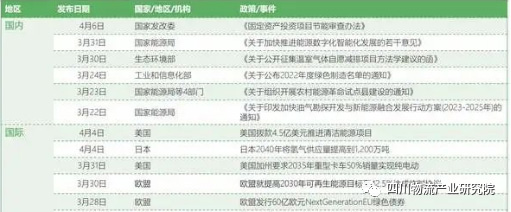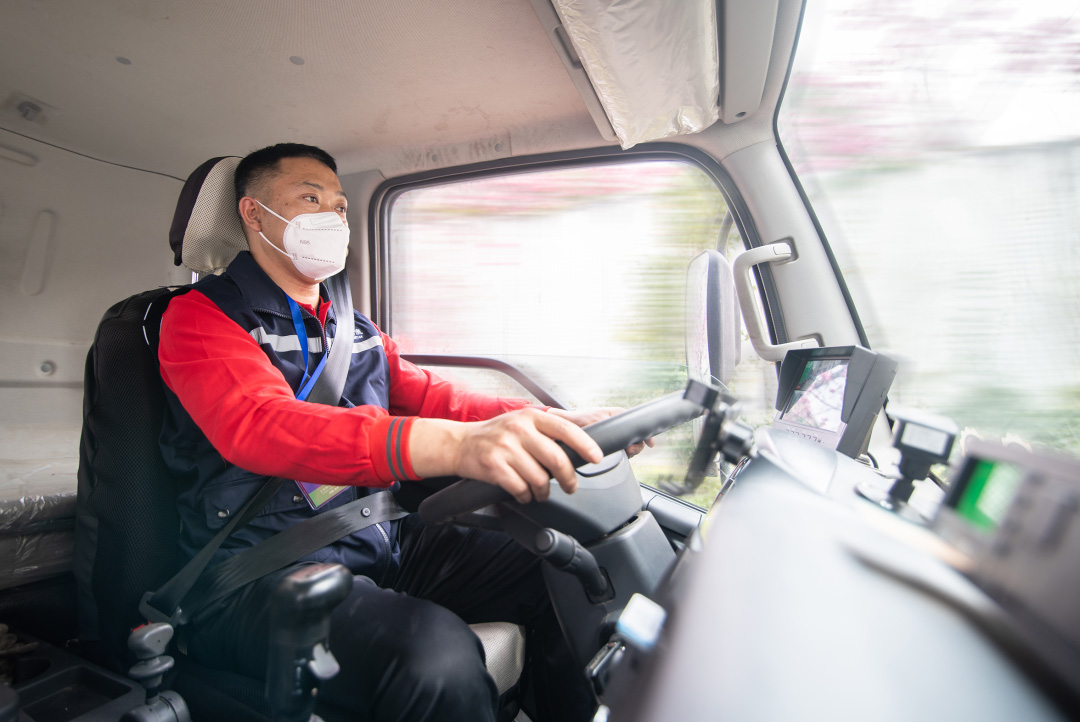With the increasingly serious climate problem, the "low-carbon revolution" of globalization is emerging, and humanity will enter a new era of low-carbon based on "low energy consumption, low pollution, and low emissions". As the development of the service industry, logistics must also take a low-carbon path, focusing on developing green logistics services, low-carbon logistics, and intelligent informatization. Green and low-carbon logistics refers to the use of logistics resources, advanced technology, and reasonable planning and implementation of various logistics activities during the logistics process. While reducing the harm of logistics to the environment, it achieves purification of the logistics environment and maximizes the utilization of logistics resources.
1、 The current development characteristics of green and low-carbon logistics
(1) The rapid development of green freight has become an important force in promoting the development of green logistics
In the process of building green logistics, green freight has become one of the most important fields, especially with the rapid development of new energy vehicles. The government of our country has implemented a subsidy policy for the purchase of new energy vehicles since 2010, introducing a series of policies to accelerate the promotion and application of new energy vehicles in urban logistics. By 2023, the policy was withdrawn, and after 13 years of successful completion of its mission and tasks, the new energy freight logistics industry has begun to take shape. At present, the entire industry has entered a new era of policy shift, supply iteration, and power transformation.
(2) Taking green packaging and green warehousing as the path, gradually promoting the development of green and low-carbon logistics In August 2020, the State Administration for Market Regulation and eight other departments jointly issued the Guiding Opinions on Strengthening the Standardization of Green Packaging for Express Delivery, focusing on the requirements of "greenization, reduction, and recyclability" in packaging governance, proposing to strengthen the standardization of green packaging for express delivery and properly handle the problem of packaging pollution. By promoting packaging standardization, promoting circular packaging, and innovating packaging materials, we aim to achieve green packaging and enhance the development of green and low-carbon logistics.
(3) ESG is gradually becoming an important driving force for leading green ecological constructionIn the world's major capital markets, financial institutions, as the main force of investment, have higher requirements for ESG data and guide large, small and medium-sized enterprises to actively disclose ESG information through green credit, green bonds, green investment and other channels, in order to obtain more inclusive, accurate, and efficient financial services. According to data from the China Association of Listed Companies, over 1700 listed companies have independently prepared and released ESG related reports for 2022, accounting for 34%. Compared to the previous year's 1112 ESG disclosed companies, there was a net increase of nearly 600. In the logistics segmented market, in addition to state-owned enterprises being required to disclose ESG information, many large logistics companies such as JD.com, SF Express, and Cainiao have also begun to disclose ESG information. Logistics enterprises investing heavily in building a green ecosystem is beneficial for the restructuring, development, and innovation of China's logistics industry structure.2、 The necessity and feasibility of developing green and low-carbon logistics
(1) The necessity of developing green and low-carbon logistics
From the perspective of international market trends, with the improvement of the current level of international economic development, adopting green and sustainable development models has become a consensus in the international field. The further development of the world economy has gradually replaced traditional tariff and non-tariff barriers with environmental barriers. The most commonly used international market license nowadays is ISO14000. The main limitation of ISO14000 on enterprises is its impact on the environment. It places great importance on the impact of enterprises on the environment during their operation and production processes, and requires that the impact on the environment be minimized as much as possible. Currently, China has entered a new stage of development and has clearly proposed the goal of peaking carbon emissions and achieving carbon neutrality. The 2022 Government Work Report also explicitly stated the need to promote green and low-carbon development. The development of green logistics is in line with policies, grasping the pulse of development and responding to the requirements of the times.Table 1: Policies and events related to low-carbon development at home and abroad

2. Developing green and low-carbon logistics is an inevitable choice for enterprises to enhance their competitivenessIn terms of economic effects, the development of green logistics promotes enterprises to achieve cost reduction and efficiency increase. At present, the turnover rate of goods in China is 30% of that of developed countries, and the inventory of goods per square meter is only 25% of the level of developed countries. Due to the lack of reasonable logistics organization, the empty driving rate of road freight has been maintained at around 50% for a long time. From the perspective of logistics costs, the manufacturing and processing time of the product from production to sale accounts for about 10% of the total time, and the remaining 90% of the time is distributed in warehousing, transportation, packaging, circulation and processing, information processing and other links. It can be said that logistics costs account for a considerable proportion of the entire product system. Through scientific and reasonable transportation and warehousing planning, it is possible to improve the resource utilization efficiency of various logistics links, reduce inefficient activities and resource consumption, strengthen the recycling and reuse of resources, reduce raw material costs and environmental risk costs, and enhance the profit space of enterprises; On the other hand, in terms of social effects, developing green logistics can enhance corporate social responsibility and bring social benefits to enterprises. The practice of green logistics reflects the social responsibility concept of enterprises to save resources and protect the environment. Implementing a green logistics management strategy will bring significant social value to enterprises, including a good corporate image, reputation, and responsibility, and win public trust.(2) Feasibility of developing green and low-carbon logistics
Mainly based on three aspects of feasibility, one is a favorable policy environment. The country has introduced a series of policies to promote the development of green and low-carbon logistics. For example, in 2022, the Ministry of Transport issued a series of policies to accelerate the promotion and application of new energy vehicles in urban logistics, and jointly with the Ministry of Public Security and the Ministry of Commerce, issued the "Management Measures for Urban Green Freight Distribution Demonstration Projects" to accelerate the green and low-carbon development of the urban freight distribution system.
The second is the rapid development of social logistics. With the development of online payment and online shopping, the growth rate of logistics demand related to online shopping has significantly accelerated. As of June 2021, the number of online payment users in China was 872 million, an increase of 18 million compared to the end of 2020; The number of online shopping users is 812 million, an increase of 30 million compared to the end of 2020. In addition, new formats such as live streaming e-commerce, social e-commerce, and fresh food e-commerce are rapidly growing, driving sustained and rapid growth in consumer logistics demand. According to data, the user base of social e-commerce in China increased from 418 million in 2016 to 780 million in 2020, an increase of 362 million people, with a compound annual growth rate of 16.9%. The third is to provide technical support for development. In recent years, green logistics technology has developed rapidly, reflected in multiple aspects such as transportation and packaging. Firstly, the proportion of clean energy in energy consumption has increased, the energy structure has been optimized, and new energy vehicles are being chosen by more enterprises. In recent years, the number of new energy logistics vehicles in China has been continuously increasing, reaching 410000 in 2019 and approximately 800000 in 2022.3、 The development path of green and low-carbon logistics
(1) Promote third-party logistics and joint distribution modelsThird party logistics and joint delivery methods are more stable, and enterprises have carefully considered choosing joint delivery. Joint delivery can reduce the costs of third-party logistics companies, thereby saving costs for customers, enabling joint delivery to leverage the scale effect of logistics, eliminate redundant transportation routes, and save time. Joint delivery improves the turnover and circulation rate of goods by integrating enterprise resources, which can quickly respond to customer needs and improve customer satisfaction.(2) Building a circular economy modelEstablish our own reverse logistics system to promote the development of green logistics. In the fields of product recycling, waste recycling, packaging processing, and waste disposal, the government and waste management agencies should encourage enterprises, social organizations, and residents to participate in waste classification and disposal. Strengthen good cooperation with social organizations, enterprises, and residents, promote the institutionalization of measures, and increase the utilization of resources.(3) Deepening the application of emerging technologiesGreen logistics related technologies will directly affect the green logistics operation effectiveness of logistics enterprises, providing strong support for enterprise competition and industry development. Only by deeply realizing the empowering role of technological means, strengthening innovation in green logistics technology, deepening new technologies such as artificial intelligence and cloud computing, and applying and popularizing new methods such as real-time positioning, infrared sensing, and digital twins, can logistics enterprises always grasp the development trend and continue to radiate development vitality on the path of green transformation and development.*The original text is reprinted from Sichuan Logistics Industry Research Institute








 Tencent QQ customer service
Tencent QQ customer service

